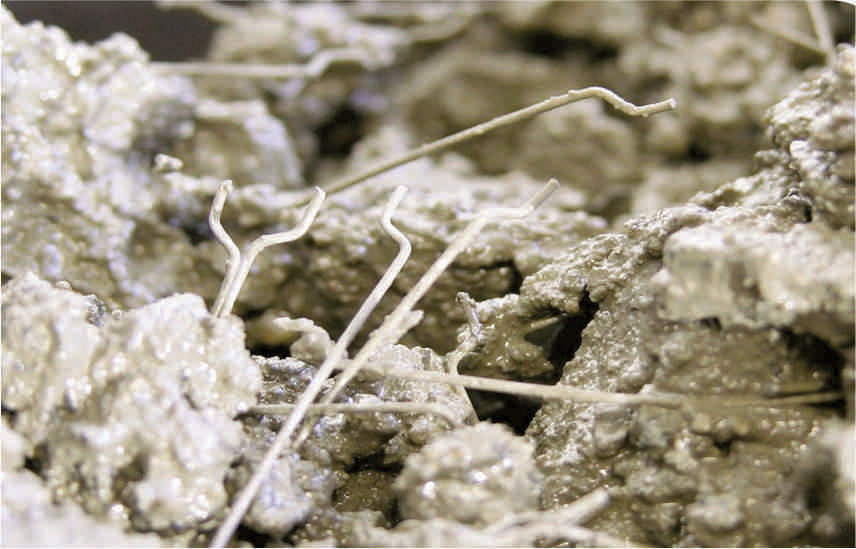Metal Concrete Fiber
- Reinforced concrete cohesion by fiber distribution
- Creation of post-stress force after the explosion
- Prevent cracks (crack control) by shrinking plastic cracks
Description
Metal Concrete Fiber
Metal Concrete Fiber reinforced concrete is a high-performance material that combines the strength and durability of concrete with the flexibility and elasticity of steel fibers. These fibers improve the tensile strength and workability of concrete, making it more resistant to cracking and structural failure. They also provide good resistance against wear, impact, and fatigue. The presence of these fibers helps in reducing and controlling shrinkage cracks.
The use of Metal Concrete Fiber for reinforcing concrete has gained significant attention in recent years, and in many cases, it is replacing rebar, eliminating the need for the construction of rebar meshes for reinforced concrete. The shift towards using steel fibers is due to the numerous technical and economic advantages they bring to concrete. In industrialized and advanced countries, the use of these metallic fibers in concrete has become widespread, and in Iran, the use of this product for creating reinforced concrete without reinforcement has recently started. Steel wire fibers in concrete, made from high-performance low-carbon wires, have high tensile strength, which allows them to mix well with concrete and enhance its mechanical properties. These fibers are produced in various shapes.
One of the key properties of Metal Concrete Fiber is the increased resistance of concrete to cracking and collapse. Steel fibers can also delay and control the failure of concrete. By adding these fibers, the brittleness of concrete is reduced, improving its ability to withstand repeated stresses, shocks, impacts, and abrasion. One of the most significant effects of using steel fibers in concrete is the delay and control of failure, which reduces the time required for project execution and prevents problems during the concrete pumping process.

Features Metal Concrete Fiber
- Easily mixes with concrete and accelerates the execution process.
- Reduces the manpower required for reinforcement.
- Saves time in the construction and weaving of rebar networks.
- Replaces rebar in reinforced concrete, eliminating the need for it.
- Saves time in project execution without causing issues in concrete pumping.
- Increases the durability and longevity of concrete over time.
- Highly resistant to erosion and corrosion.
- Enhances concrete cohesion through uniform fiber distribution.
- Generates post-tensioning forces after an explosion.
- Improves concrete’s resistance to weakening and damage during earthquakes.
- Suitable for improving concrete resistance to cracks caused by drying.
- Prevents the formation of plastic shrinkage cracks (crack control).
- Provides high resistance to explosion and improves crack failure.
- Reduces the thickness of concrete while maintaining its strength characteristics.
- Exhibits good resistance to impact.
- Helps reduce project costs.
- Makes the execution process easier.
More products: Concrete Fiber
Applications Metal Concrete Fiber
- Suitable for tunnel construction and road building projects.
- Ideal for use in parking lot floors.
- A great choice for flooring in industrial factories, halls, and warehouses.
- Usable for road surfacing.
- Improves and strengthens weakened marine structures, such as lighthouses.
- Suitable for reinforcing and protecting bridge walls.
- Ideal for stabilizing sloped rock formations.
- Suitable for concrete pouring in steel deck roofs.
- An excellent option for combining with ready grout and reinforcing grout.
Technical specification table
| Materials with standard | ASTM 510 M |
| Tensile strength | 700-1200 mpa |
| Strong bonding force in concrete | by sewing |
| Appearance | Sticky fibers in the form of strips |
| Special Weight | 1,9 |
| Aggregation rate | less than 0.06 percent |
Package
20kg bag






Reviews
There are no reviews yet.